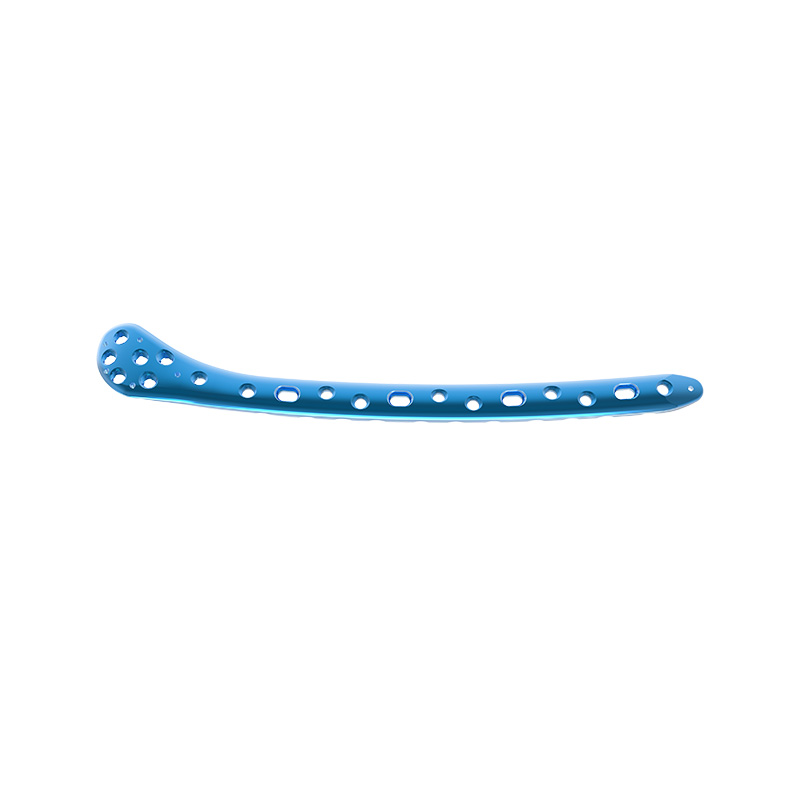Proximal Ulna ISC Locking Compression Plate I
Product Features
● Low profile plate is designed to help minimize discomfort and soft tissue irritation.
● Contoured plates mimic the anatomy of the olecranon
● Tabes enables in-situ contouring for true plate-to-bone conformity.
● Left and right plates
● Undercuts reduce impairment of blood supply
● Available sterile-packed


Indications
Indicated for fixation of fractures, fusions, osteotomies, and non-unions of the ulna and olecranon, particularly in osteopenic bone.
Product Details
| Proximal Ulna ISC Locking Compression Plate I | 6 holes x 95mm |
| 8 holes x 121mm | |
| 10 holes x 147mm | |
| 12 holes x 173mm | |
| Width | 10.7mm |
| Thickness | 2.4mm |
| Matching Screw | 3.5 Locking Screw / 3.5 Cortical Screw / 4.0 Cancellous Screw |
| Material | Titanium |
| Surface Treatment | Micro-arc Oxidation |
| Qualification | CE/ISO13485/NMPA |
| Package | Sterile Packaging 1pcs/package |
| MOQ | 1 Pcs |
| Supply Ability | 1000+Pieces per Month |
The surgical procedure involving the Proximal Ulna ISC Locking Compression Plate typically involves making an incision over the proximal ulna, reducing the fracture (aligning the broken bone pieces) if necessary, and securing the plate to the bone using locking screws. The plate is carefully positioned and fixed in place to ensure proper alignment and stability.








